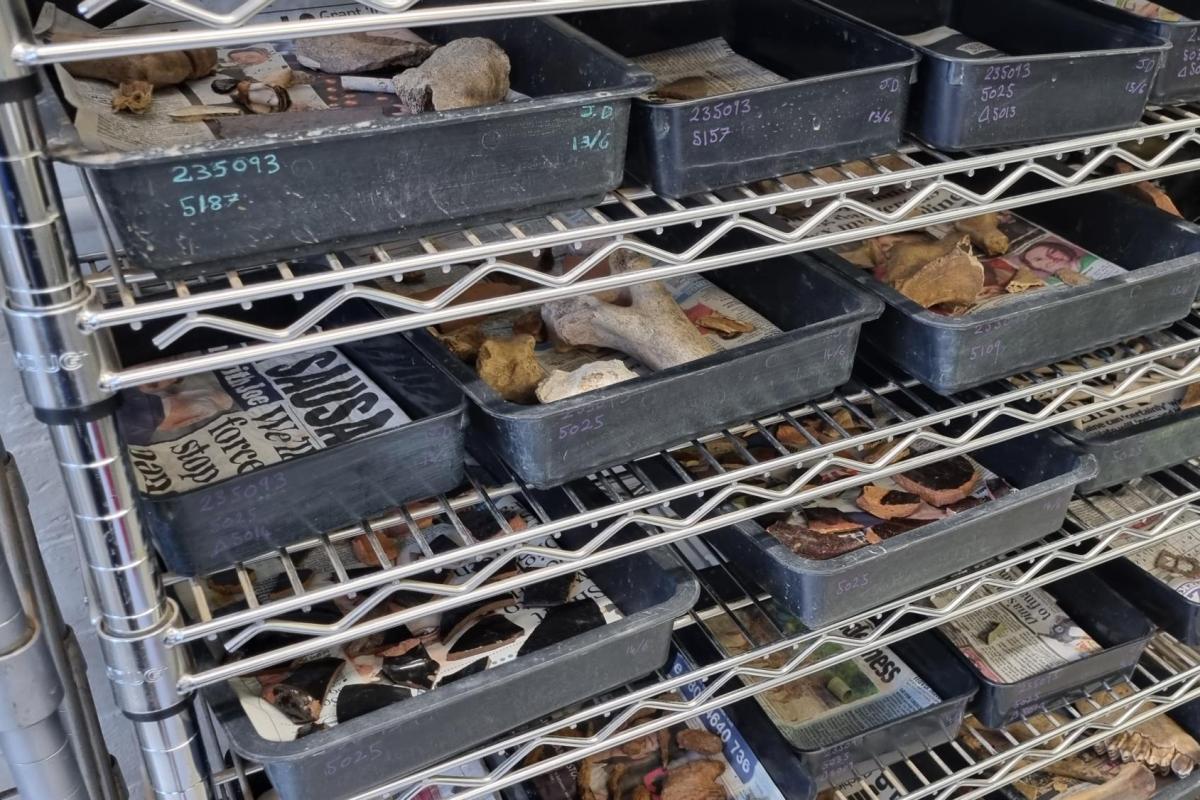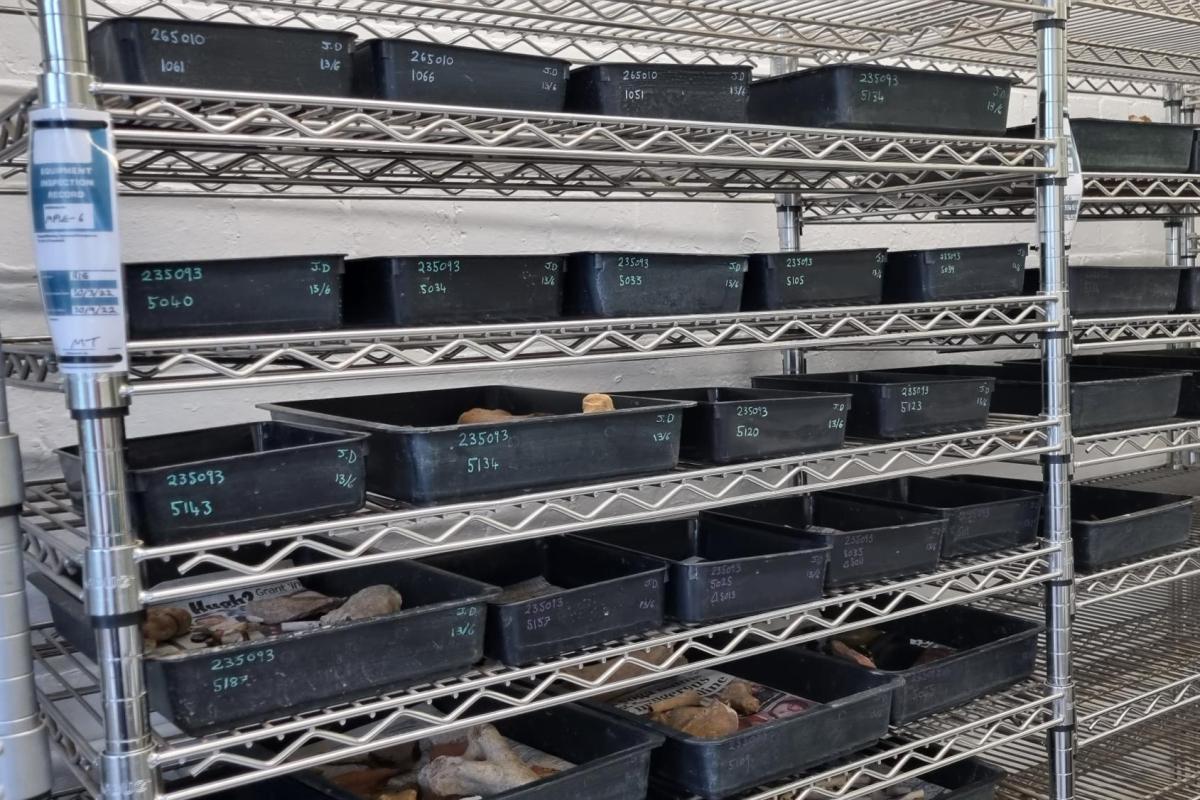Behind the scenes on Owen's secondment
Owen Jenkins, Fieldwork archaeologist, recently spent three months working with the Finds specialists at our Sheffield office. Here, Owen shares the experiences he’s gained through secondment:
When I first heard about the opportunity, I wasn’t sure what it would entail – only that it would be a great chance to broaden my skills and knowledge. This secondment makes a great addition to my role as a Finds Champion. This programme enables Fieldwork specialists to develop greater understanding of the post-excavation process and gain experience in finds processing and management. Secondment gives me the ability to share my knowledge once I’m back out in the field.
Firstly, I was presented with a draft personal development plan, setting expectations and objectives, and detailing how they tie into Wessex Archaeology’s core values. I was also tasked with adding my own secondment goals. The skills I would be building included finds tracking, cleaning, identification of archaeological materials, marking, boxing and an introduction to archiving (including processes for indexing, preparation, deposition, and use of databases).


Above: Finds processing in our Sheffield offices
One of the first tasks of the week, usually completed on a Monday, is tracking. This involves cross-referencing the finds bags against the tracking forms, noting the range of artefacts sampled and recording total weight of finds. Once checked, the next stage is cleaning. An important part of this is being aware of best practice in preservation of archaeological material. Certain materials, especially organic materials, require special treatment to avoid damage and ensure preservation; something which I had the opportunity to focus on during secondment. This knowledge will be invaluable in the field, informing handling of fragile archaeological materials during initial collection and ensuring best chance of survival for delicate artefacts such as wood and leather. I also built on my skills in identifying different types of archaeological material, as we can sometimes receive materials from site whose identification involves extensive technical expertise. By disseminating my new understanding in this area, I can help my colleagues with material identification whilst on site.
Following washing and drying, we move to the marking process. My secondment has allowed me to gain additional experience marking finds, including finds from the HS2 Coleshill site. Artefacts need to be marked in ink with both the accession code and context number written on individual finds. This is normally applied with a nibbed dip pen and ink, often in black, unless the item is dark in colour in which case white ink is used. The accession number is written quite small so as not to obscure the find. This can be challenging as some different materials, such as animal bone, are difficult to write on.
After marking, we box artefacts in museum approved/specified boxes for storage in the archive room, before being sent to specialists for post-excavation assessment. My secondment has helped me gain experience in appropriately boxing, having assisted in boxing many of our HS2 finds. Boxing is done numerically, usually separated by material type with animal bone and pottery boxed separately. Materials can have different preservation requirements and are therefore sometimes stored in specific ways. Metal requires storage in an airtight plastic Stewart tub, with silica gel added to reduce moisture-related deterioration. Another example is leather, which is often put into a finds bag with a small amount of clean water (to keep it from drying out), covered in black polythene (to reduce light related deterioration) and placed into a fridge to keep it stable.
Indexing and checking against the finds database ensures all finds are present in the correct boxes. Each index includes: a list of everything contained within each box, site code, site name, accession code, museum, county, and material type found on the box label.
I gained an insight into the processes involved in archiving, selection, and collection (which materials are to be kept when materials are deposited in museums and when materials are to be discarded). I also enhanced my skills in using our project management systems.
Above: Sketchfab model of a Late Neolithic Woodlands Pottery
One of the main platforms I used was OASIS (Online AccesS to the Index of archaeological investigationS), part of the Archaeology Data Service (ADS). The OASIS website holds archaeological site records from across the country, including all Wessex Archaeology sites. OASIS data includes project dates, location of the site, details and a copy of any final project reports/publications, overview of the project methodology and work done, the project number and – crucially for the finds specialists – deposition details, including which museum the archive and finds are likely to deposited with (if applicable). This is useful for future report writing; plus it’s always beneficial to gain greater understanding of the project processes beyond fieldwork.
My finds secondment has been extremely useful: I’ve enhanced my skills, which will benefit myself and my colleagues in the field. Improving communication between site and finds specialists also solves issues onsite before processing. I would recommend all archaeologists interested in learning more about finds processing get involved with schemes like the Finds Champions programme and apply for secondment.


